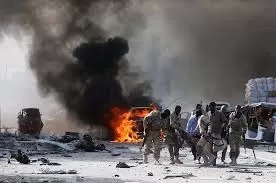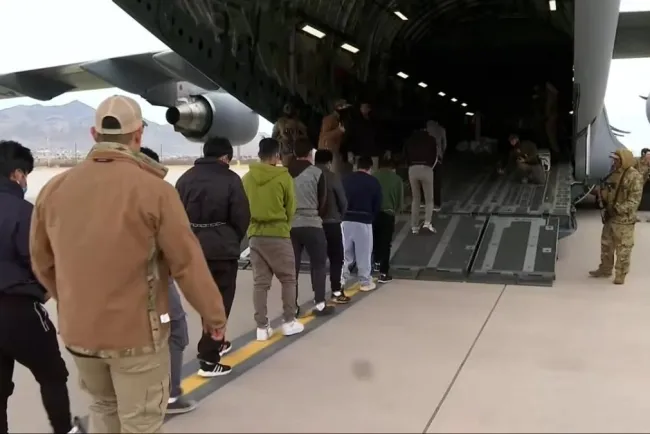U.S. Airstrikes Target ISIS Operatives in Somalia Amid Growing Terrorism Threat
The United States conducted airstrikes against ISIS operatives in Somalia, marking the first attack under President Donald Trump’s second term. This military action targets Islamic State operatives in the Puntland region, reinforcing the U.S.-Somali security partnership in combating terrorism. How does this attack fit into the broader strategy of the U.S. in Africa and the evolving threat of ISIS in Somalia?

A Strategic Military Action
On January 27, 2025, the U.S. military conducted airstrikes targeting ISIS operatives in Somalia, marking the first such attack during President Donald Trump's second term. The airstrikes took place in the GES Mountains, located in the semi-autonomous Puntland region, a stronghold of the Islamic State affiliate in the country. According to initial assessments from the Pentagon, multiple ISIS operatives were killed in the operation, which aimed to neutralize the terror group’s presence in the region.
This marks a notable shift in U.S. military strategy in Somalia, as President Trump’s second term has seen an adjustment in the country’s approach to combating terrorism in Africa. The Pentagon’s assessment suggests a targeted operation against ISIS elements without causing civilian casualties, and U.S. President Trump praised the strike in a post on Truth Social, emphasizing that the operation destroyed the terrorists' hideouts in the caves, highlighting a precision-based strike with minimal collateral damage.
Main Developments: Resumed Military Action Against ISIS
The U.S. airstrikes in Somalia come as part of an ongoing strategy to counter terrorism in the Horn of Africa. These attacks are not the first of their kind in the region, as U.S. military operations have consistently targeted Al-Shabaab and ISIS elements since 2017. However, they do reflect an evolving policy under the current U.S. administration. While President Trump’s first term focused on reducing the U.S. troop presence in Africa and scaling back military operations, his second term appears to bring a renewed focus on military action, specifically targeting ISIS operatives.
The strikes were conducted in cooperation with Somali authorities, with Somali President Hassan Sheikh Mohamud reaffirming the strong security partnership between the two nations in combating extremist threats. The operation against ISIS reinforces the U.S.-Somali alliance, which has grown stronger, particularly under the leadership of President Joe Biden, who has redeployed troops to maintain a U.S. presence in the country for counterterrorism operations.
Regional Security: A Broader Strategy in Somalia
While the U.S. has refocused its military efforts in Somalia, the Somali government has also ramped up its internal security measures, particularly in the Puntland region. Puntland has long been an area of concern for both Somali and international forces due to the growing presence of ISIS. The Puntland information minister has claimed that local forces have successfully confined ISIS activities to the Galgala mountains and are actively working to prevent the group from infiltrating local populations.
The Somali government has called for international support in terms of ammunition and military supplies, urging the international community to aid in their fight against terrorism. The plea highlights the challenges faced by the Somali military in countering ISIS and other extremist groups like Al-Shabaab, which remain active in different parts of the country.
The Rise of ISIS in Somalia: A Growing Threat
The Islamic State affiliate in Somalia, which emerged in 2015, represents a growing challenge for both the Somali government and international forces. Originally a breakaway faction from Al-Shabaab, the ISIS affiliate has established itself in the Puntland region, particularly in the remote Galgala mountains. Under the leadership of Abdul Kadir Mumin, the group has built a network of hideouts and training camps, making it a persistent threat to the stability of Somalia and the broader Horn of Africa region.
The rise of ISIS in Somalia is particularly concerning because it represents a shifting dynamic in the region’s extremist landscape. While Al-Shabaab remains the dominant terrorist group in the country, the increasing presence of ISIS operatives has introduced a new layer of complexity in counterterrorism efforts. The U.S. airstrikes against ISIS are part of a broader strategy to combat this growing threat, even as the fight against Al-Shabaab continues to dominate security concerns in Somalia.
International Responses and Future Outlook
The U.S. airstrikes have received support from the Somali government, which remains resolute in its commitment to eliminating international terrorism and ensuring regional stability. The Somali government’s calls for international assistance underline the ongoing challenges faced by the country in managing its security situation and combating the spread of terrorism.
The Biden administration’s decision to maintain a U.S. presence in the region and to continue targeting terrorist groups aligns with broader global counterterrorism objectives. However, the U.S. must balance its counterterrorism efforts with concerns over African sovereignty and the growing resistance to foreign military interventions in the region.
Meanwhile, the international community’s role in providing military support to Somalia will be crucial. With ISIS operating in remote and hard-to-reach areas like the Galgala mountains, the Somali forces need sustained international assistance to strengthen their capabilities in the fight against extremism.
A Complex and Evolving Situation
The U.S. airstrikes against ISIS operatives in Somalia represent a significant moment in the ongoing battle against terrorism in the Horn of Africa. While these strikes underscore the strong partnership between the U.S. and Somalia, they also highlight the complex and evolving nature of the security situation in the country. The presence of ISIS, alongside Al-Shabaab, continues to pose a significant challenge to regional stability.
As the U.S. continues its military actions in Somalia, the question remains whether these operations will be enough to defeat the growing ISIS presence or if a more comprehensive strategy, including political and economic solutions, will be required. As Somalia’s government seeks increased international support, the future of counterterrorism efforts in the region depends on a coordinated approach that addresses both the security and developmental needs of the country.
What's Your Reaction?















